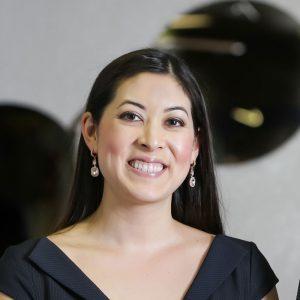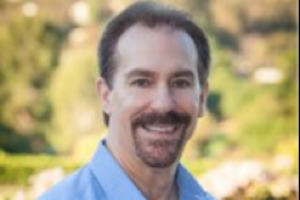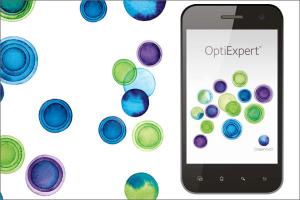This month, we take a closer look at presbyopia and options for optimally correcting presbyopic patients.

We sat down with Dr. Stephanie Woo for some practical insights and patient success stories from her busy contact lens practice in Lake Havasu, AZ.
What do you think have historically been some of the greatest challenges in successfully fitting multifocal contact lenses?
In the past, the fitting guides were not helpful. Practitioners basically threw them in the trash because the fitting guides were always changing and not consistent. Due to the inconsistencies and difficulties practitioners faced, many practitioners gave up on multifocal lenses.
In the more recent years, improved lens designs, materials and fitting guides have yielded more successful outcomes, so more practitioners are willing to utilize multifocals in their practice.
How have Biofinity® and clariti® multifocal lenses helped you overcome those challenges?
Both Biofinity and clariti 1 day multifocals have easy to use fitting guides. You can tell there were many patients used when developing the fitting guides, which has simplified the fitting process.
Can you share a patient success story with Biofinity multifocal?
I had a 55-year-old female who had been doing monovision for 12 years, but she was starting to have more difficulty at mid-range, such as computer work. This is very common for patients in the age range. We discussed the different options and decided to try a multifocal instead of proceeding with monovision. The Biofinity multifocal was an obvious choice because of the center distance and center near design. This would present a similar vision situation to her monovision, which she is used to, but with enhanced stereo vision and give her the additional vision in that intermediate zone, which she was missing. When we put the lenses on in office, she was impressed with the distance and near vision, and she was happy she could read her phone at arm’s length. She said the vision was “a little funny” at first but was excited to try the lenses. After about 2 weeks of wear, the patient returned to clinic and was extremely happy with her vision. She stated that with the new lenses, she was able to see her computer much easier and she also stated her vision was better while driving.
Can you share a patient success story with clariti multifocal?
A 42 year old female who was +1.50 OU presented to the clinic complaining that her near vision was starting to worsen. After refraction, her distance prescription had increased to +2.00 and she was accepting a +1.25 add at near. After discussing options such as glasses, bifocals, progressive lenses, and contact lenses, she wished to try contact lenses. I felt multifocals would work well for her because she was having difficulty seeing far and up close. I chose the clariti 1 day multifocal because it is a comfortable daily disposable lens with UV protection. She wanted to wear glasses part time and contacts part time, so I felt a daily disposable lens would be more appropriate. Simple hyperopes with early presbyopia are some of the easiest and most grateful patients! She absolutely loved her contact lenses, and to this day, she still wears them.
What are your favorite multifocal fitting pearls?
- Screen your patients for good candidacy, especially if you are new to multifocals – it is easy to get discouraged if you do not have many successful patients right off the bat.
- Follow the fitting guide! I know this is stressed a lot, but it really will improve your success rate.
- Know when to stop – personally, I will make changes to the lens 2 times. If the vision is still unacceptable, it may be time to explore other options such as monovision or single vision contacts. Trying multiple lenses and making adjustments to the point where you are losing money will drive you and the patient crazy.
- Recommend them! It is our job as practitioners to educate patients on all of their vision correction options. Whether it is contacts, glasses, refractive surgery or anything else, our patients deserve to know all their options. Many patients do not even know about multifocals. Once you start recommending them, you’ll be surprised how many patients want to try them.
Dr. Stephanie L. Woo was born and raised in Lake Havasu City, AZ. She graduated Magna Cum Laude from the University of Arizona and graduated with honors from the Southern California College of Optometry. She completed a Cornea and Contact Lens Residency at the University of Missouri, St. Louis, where she was trained to fit highly irregular corneas. She was the recipient of the Gas Permeable Lens Institute Award for Clinical Excellence and also the John R. Griffin Award for Excellence in Vision Therapy.
Dr. Woo is a Fellow of the American Academy of Optometry and a Fellow of the Scleral Lens Society. She authored the Gas Permeable Lens Expert column in Review of Contact Lenses and several articles for the Contact Lens and Cornea section of the American Optometric Association. Dr. Woo co-authors the GP Insights column for Contact Lens Spectrum, and she is an active Gas Permeable Lens Institute advisory board member. Dr. Woo currently serves as Vice President of the Scleral Lens Society, a non profit organization committed to teaching practitioners the art and science of scleral lenses. Dr. Woo enjoys lecturing around the world on the subject of contact lenses and anterior segment disease.
Dr. Woo‘s practice, Havasu Eye Center, was a 2017 Best Practices honoree.
Visit our product pages for more information about clariti 1 day multifocal and Biofinity multifocal and how they can help maximize your multifocal fitting success.








